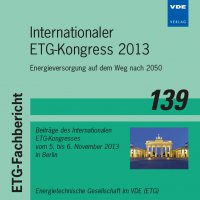Identification of important E-machine Parameters for the inverter-fed Operation over wide Speed Ranges
Konferenz: Internationaler ETG-Kongress 2013 – Energieversorgung auf dem Weg nach 2050 - Symposium 1: Security in Critical Infrastructures Today
05.11.2013 - 06.11.2013 in Berlin, Deutschland
Tagungsband: Internationaler ETG-Kongress 2013 – Energieversorgung auf dem Weg nach 2050
Seiten: 8Sprache: EnglischTyp: PDF
Persönliche VDE-Mitglieder erhalten auf diesen Artikel 10% Rabatt
Autoren:
Hackmann, Wilhelm; Märgner, Moritz; Wang, Xuming (Continental AG, Berlin, Deutschland)
Inhalt:
Three phase electrical machines in traction applications are operated in inverter-fed operation over wide speed ranges. With a high dynamic e-machine control and the operation with inverter switching frequencies up to 10 kHz high performance requirements can be achieved, as high drive dynamics, optimum operating points (? system efficiency optimizations), satisfying torque accuracies and low parasitic effects (as e. g. current ripple, harmonic losses, pulsating torques and magnetic noise). In order to get sufficient information about e-machine parameters, single loss values over the whole speed range and the harmonic behaviour, sophisticated e-machine measurement set-ups and procedures are necessary. In this contribution a measurement set-up is described, which is capable to provide relevant measurement data over a wide frequency range. All measurement signals are registered with a transient recorder and a sufficient resolution for the evaluation of high frequency components. The measurement of three phase voltages and currents allows the investigation of positive and negative sequent frequency components in these signals. In addition the star point and also the rotor shaft potential (via a small brush system) are measured for a deeper analysis of inverter-induced bearing currents. As an example measurements on an externally excited synchronous machine are presented, including all relevant evaluations. The measurement procedures and evaluations can of course also be adapted to other e-machine types.


